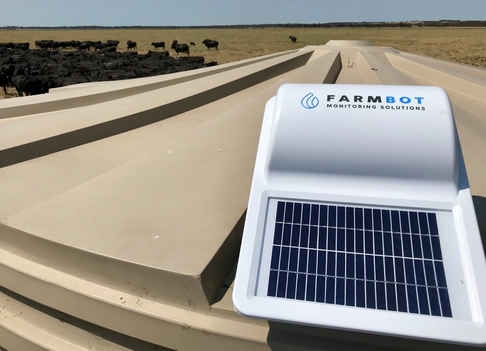The water management system providing real-time benefits and savings for farmers
Published on by Water Network Research, Official research team of The Water Network in Business
An Australian startup company is helping farmers better manage their water usage through precision agriculture technology, to translate into better productivity and save costs.
Farmbot is an agritech company that is focused around better water management for farmers and helping farmers better know their water. It has been operating for around for five years, and Managing Director, Andrew Coppin says the business proposition was discovering the granularity of water consumption in an agriculture sense.
"We started out thinking about the problems of water management a bit differently," Mr Coppin said. "Water is one of those things that we know is the lifeblood of agriculture, but it is treated, in some ways, with a bit of contempt; because it comes from the sky or the ground. In some people's minds, it is free. The reality is that it is not free, and we need to start thinking about it differently. Surprisingly enough, like all other large data sets, we are learning things about farm water eco-systems by looking at large sets of trend and consumption data, which many farmers don't even know themselves."

He added that the company has developed a monitor that can work with satellite technology, or 3G/4G/LTE and are guaranteed to work anywhere in Australia around the clock. Mr Coppin says the big objective for the company is the real-time factor, and farmers eventually only get alerts when something is not right, so they can take action quickly.
"We are not so much concerned with the technology, but what is the best use for the purpose," Mr Coppin said. "You are not really on the Internet of Things in agriculture if you're not doing things in real-time. Farmers need to know what is happening now, not down the track after every day, or longer. So, our unique IP is the ability to manage the power and dissemination of information in a cost-effective and real-time way. Our core monitoring device sits on the water device for seven years with no power attached to it. Inside the device is machine learning; where the device is always on and always learning about the eco-system of your property, and is constantly getting better, so it is forecasting the future six hours, and the data replaces the forecasts with the reality and learns how it was different and keeps re-forecasting."
So, by analysing the data, on farms, in real-time, and assessing that data against a range of other metrics, Mr Coppin says it's about "Precision Ag 2.0", where there is a realm of comparing data year on year, or incidence on the incidence and materialising production by encouraging proactive, as opposed to reactive management.
"It doesn't matter if it is strawberries or almonds, or even cattle or sheep," he said. "We can look at this time last year, or the year before, or the year before that - here is the amount of water you had, here is what the climate was doing, or the soil moisture - so this is what is happening. It can then be determined when the optimal growing period will be to the extent of; in four days, ten hours and fifteen minutes, that will be your optimum production period. It could also be that in five days, three hours and twenty minutes you will run out of water. Farmers can then act accordingly. So, we are teaching them to appreciate water as an input - they know all other inputs in detail - they can now do the same with water."

The company says after an installation time of just 10 minutes and review time of fewer than three minutes, it could mean a reduction of 90 per cent in tank inspections, and an estimated average saving of circa $2500 per device installed.
Taxonomy
- Envirionmental Data Management
- Irrigation Management
- Irrigation Scheduling
- Precision irrigation